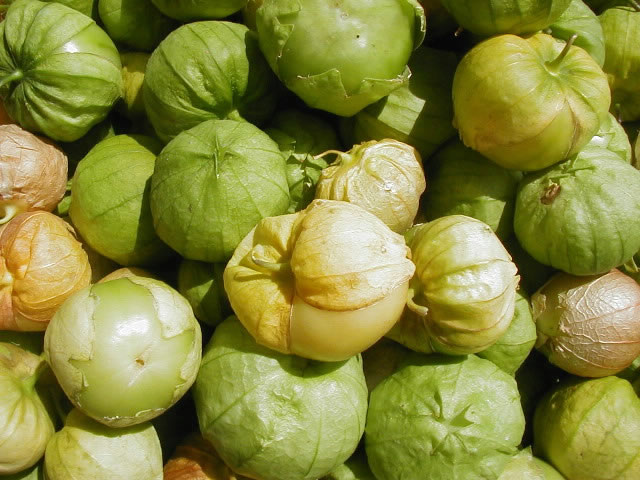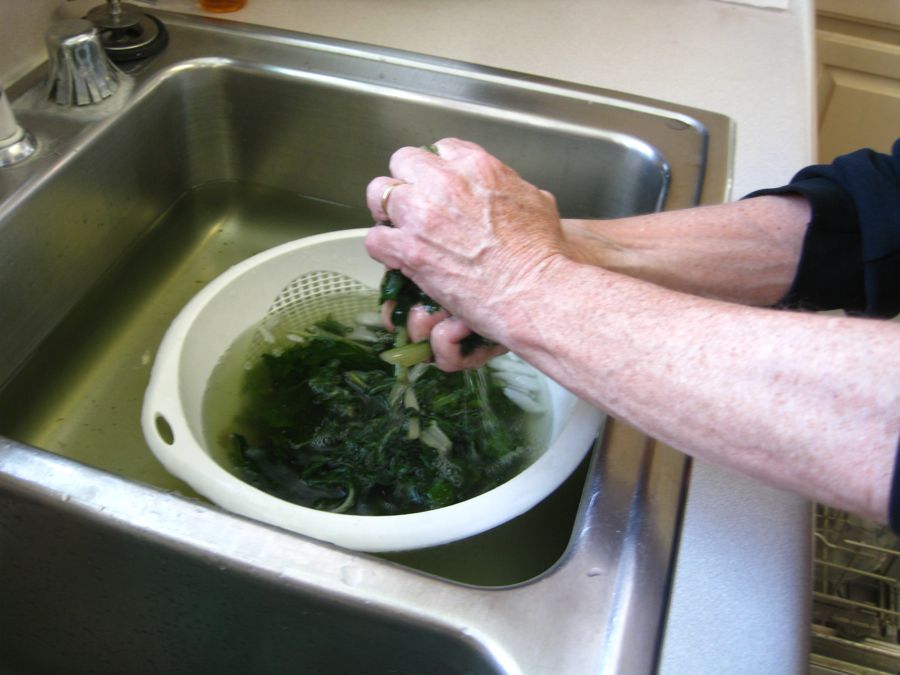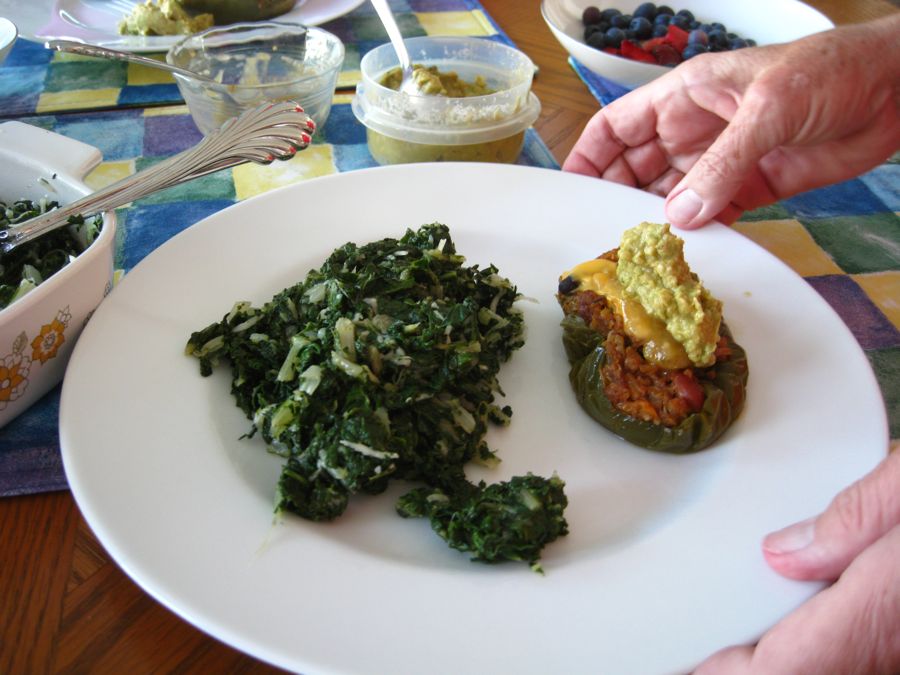What's In The Garden Today???
We often head for the garden and see what's ready to eat... Join us today
Tomatillos

Looking good
Did You Know? - The tomatillo (Physalis philadelphica) is a plant of the nightshade family, related to the cape gooseberry, bearing small, spherical and green or green-purple fruit of the same name. Tomatillos, referred to as green tomato (Spanish: tomate verde) in Mexico, are a staple in Mexican cuisine. Tomatillos are grown as annuals throughout the Western Hemisphere. Often self-incompatible, tomatillos often need a second plant to enhance pollination and guarantee fruit set.
The tomatillo fruit is surrounded by an inedible, paper-like husk formed from the calyx. As the fruit matures, it fills the husk and can split it open by harvest. The husk turns brown, and the fruit can be any of a number of colors when ripe, including yellow, red, green, or even purple. Tomatillos are the key ingredient in fresh and cooked Latin American green sauces. The freshness and greenness of the husk are quality criteria. Fruit should be firm and bright green, as the green colour and tart flavour are the main culinary contributions of the fruit. Purple and red-ripening cultivars often have a slight sweetness, unlike the green- and yellow-ripening cultivars, and are therefore somewhat more suitable for fruit-like uses like jams and preserves. Like their close relatives cape gooseberries, tomatillos have a high pectin content.
Tomatillo plants are highly self-incompatible (two or more plants are needed for proper pollination; thus isolated tomatillo plants rarely set fruit).
Ripe tomatillos will keep in the refrigerator for about two weeks. They will keep even longer if the husks are removed and the fruits are placed in sealed plastic bags stored in the refrigerator. They may also be frozen whole or sliced.

Here's what we saw... Tomitillos ready to go

Cook those tomatillos

It's easy... add about ten serano peppers and you are ready to go!
Swiss Chard
Did You Know? - Chard, also known by the common names Swiss chard, silverbeet, perpetual spinach, spinach beet, crab beet, bright lights (due to the bright and vivid spring colors when they are cooked or provided as a medley of vegetables), seakale beet, and mangold, is a leafy vegetable, and is one of the cultivated descendants of the sea beet, Beta vulgaris subsp. maritima. Although the leaves are eaten, it is in the same species as beetroot (garden beet), which is usually grown primarily for its edible roots.

Beautiful plant

After the leaves were picked

Wash them up aand ready to boil... Take out the LARGE stems

Reay to go

Cook about five minutes

Simple let them boil in salted water for about 5-7 minutes

After being boiled let them cook down and take all the water out

Swiss chard stays green... Not like spinach

Chop chop chop

Add some parmesian cheese
and one is ready to to go
Pick Some Fresh Berries

Berries freshly picked

Add a stuffed pepper (from the freezer) and dinner be served
